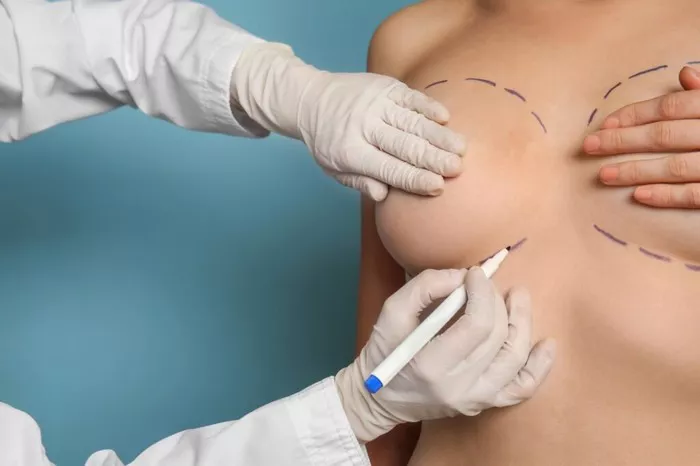Breast augmentation is a popular surgical procedure that enhances the size and shape of the breasts. After undergoing breast augmentation, it’s important to provide proper support and care to optimize the healing process and achieve the desired results. Many women wonder when they can safely transition from surgical bras to sports bras, which offer more comfort and flexibility during physical activities. In this comprehensive article, we will discuss the timeline for wearing a sports bra after breast augmentation, the factors to consider, and guidelines to ensure a smooth recovery.
The Importance of Proper Support After Breast Augmentation
Proper support is essential after breast augmentation surgery to promote healing, minimize swelling, and protect the surgical incisions. Immediately after surgery, surgeons typically recommend wearing a surgical bra or a compression garment to provide support, reduce movement, and maintain the desired position of the implants. These bras are designed specifically for post-operative use and offer optimal support during the initial healing phase.
Transitioning to a Sports Bra
While surgical bras provide crucial support in the early stages of recovery, many women look forward to transitioning to a sports bra for added comfort and flexibility. Sports bras offer better breathability, freedom of movement, and a wider range of sizes and styles. However, it’s important to follow your surgeon’s guidelines and ensure that your body has sufficiently healed before making the switch.
Factors to Consider
The timeline for transitioning to a sports bra may vary depending on several factors. It’s important to consider the following factors when determining when to start wearing a sports bra after breast augmentation:
1. Healing Progress
Each individual’s healing process is unique, and it’s essential to allow your body ample time to recover before introducing a sports bra. Healing progress can be influenced by factors such as the surgical technique, implant placement, incision type, and your body’s natural healing capabilities. It’s crucial to follow your surgeon’s instructions and attend follow-up appointments to monitor your progress and receive personalized guidance.
2. Incision Healing
Proper incision healing is a critical factor when transitioning to a sports bra. The incisions need time to close, and the surrounding tissues must heal to minimize the risk of complications or delayed healing. It’s important to wait until your surgeon confirms that your incisions have sufficiently healed and that there are no signs of infection or wound complications.
3. Swelling and Discomfort
Post-operative swelling and discomfort are common after breast augmentation. While these symptoms typically subside over time, it’s important to ensure that your swelling has significantly decreased and you’re comfortable enough to wear a sports bra without added pressure or discomfort. Wearing a sports bra too early can potentially exacerbate swelling or cause discomfort, so it’s crucial to listen to your body’s cues and consult with your surgeon before making the switch.
4. Surgeon’s Recommendations
Your surgeon’s recommendations and guidelines are crucial when determining when to start wearing a sports bra. They have the expertise and knowledge to assess your unique circumstances, monitor your healing progress, and provide personalized advice. It’s important to communicate openly with your surgeon, ask any questions or concerns you may have, and follow their instructions for a safe and successful recovery.
Guidelines for Transitioning to a Sports Bra
While the exact timeline for transitioning to a sports bra will vary for each individual, the following guidelines can help ensure a smooth transition:
1. Follow Your Surgeon’s Instructions
Strictly follow your surgeon’s instructions regarding post-operative care, including when to transition to a sports bra. They will provide personalized guidance based on your healing progress and specific circumstances.
2. Wait for Incision Healing
Ensure that your incisions have adequately healed before considering a sports bra. This typically takes a few weeks, but it can vary depending on your body’s healing response and the surgical technique used. Consult with your surgeon to confirm that your incisions are sufficiently closed and there are no signs of complications.
3. Gradually Introduce Sports Bras
When you receive clearance from your surgeon, gradually introduce sports bras into your wardrobe. Start with low-impact activities and shorter durations to allow your body to adjust to the increased support and movement. Avoid high-impact activities or intense workouts until you have fully transitioned to sports bras and your surgeon has given you the green light.
4. Choose Supportive Sports Bras
Select sports bras that offer adequate support and compression without excessive tightness. Look for bras with adjustable straps, wide bands, and breathable materials. Ensure that the sports bras provide proper coverage and encapsulation for each breast to minimize movement and enhance comfort during physical activities.
5. Listen to Your Body
Pay attention to any signs of discomfort, pain, or swelling when wearing a sports bra. If you experience any discomfort, consider switching back to a surgical bra or consulting with your surgeon for further evaluation. It’s important to prioritize your comfort and overall well-being during the transition process.
Conclusion
Transitioning to a sports bra after breast augmentation is an exciting milestone in your recovery journey. However, it’s crucial to prioritize proper healing and follow your surgeon’s recommendations. The timeline for wearing a sports bra varies for each individual, depending on factors such as healing progress, incision healing, swelling, and your surgeon’s guidance. Be patient, listen to your body, and gradually introduce sports bras into your wardrobe. Remember that comfort and support are essential during this transition. If you have any concerns or questions, consult with your surgeon for personalized advice and guidance to ensure a safe and successful recovery.


